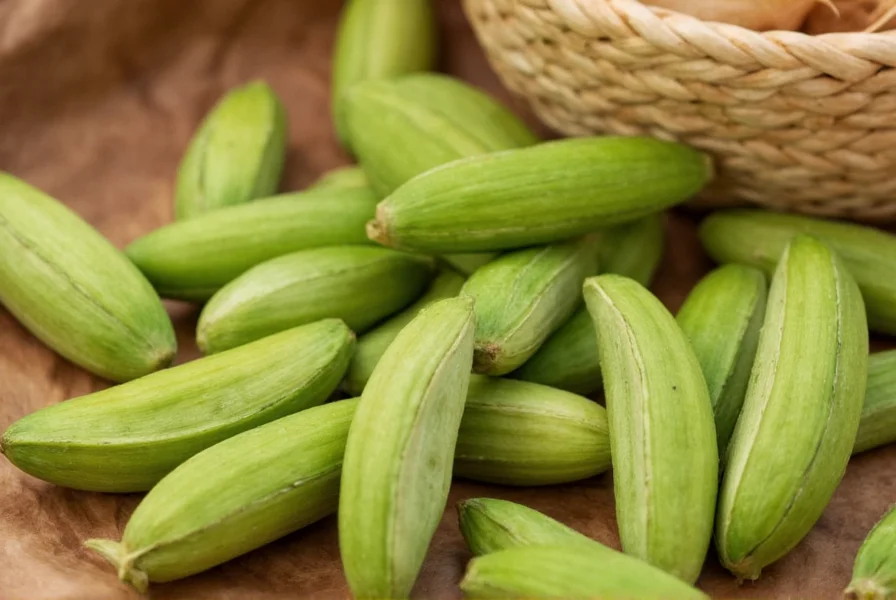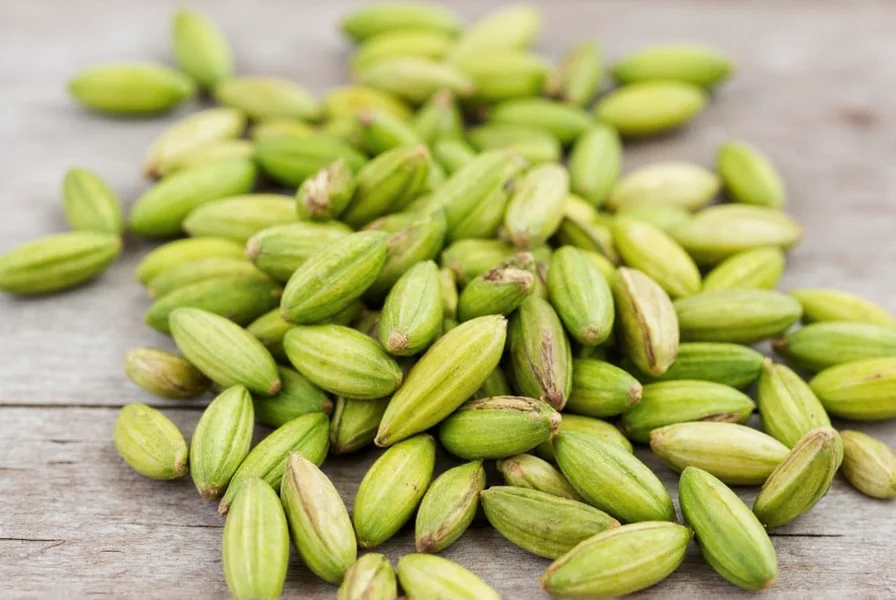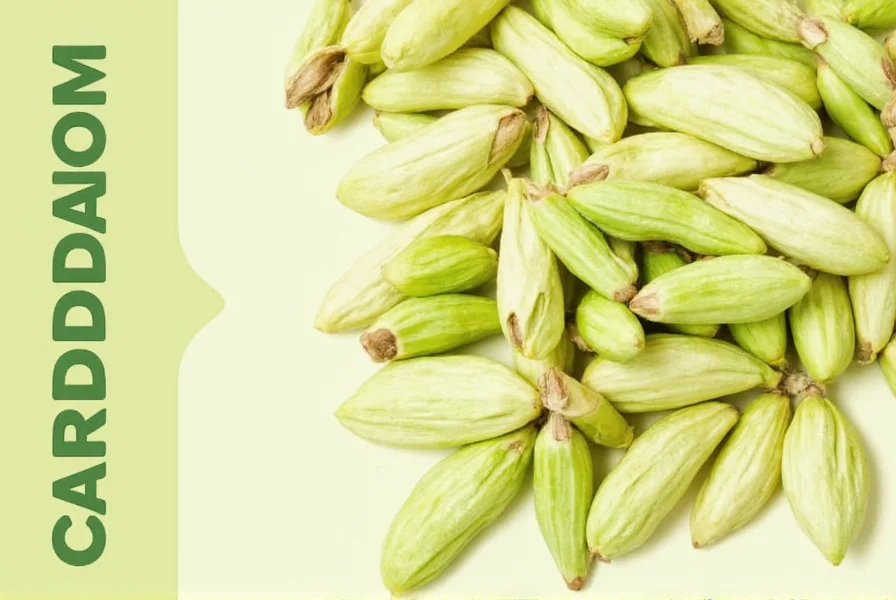Cardamom, known botanically as Elettaria cardamomum (green cardamom) and Amomum subulatum (black cardamom), produces one of the most distinctive and versatile scents in the spice world. The aromatic profile varies significantly between the two main varieties, with green cardamom offering a brighter, more citrus-forward fragrance while black cardamom delivers a smokier, more intense aroma.
The Science Behind Cardamom's Fragrance
The distinctive cardamom scent profile stems from its complex chemical composition. The primary compound responsible for cardamom's characteristic aroma is 1,8-cineole (eucalyptol), which typically constitutes 40-60% of the essential oil. Additional compounds contributing to the cardamom essential oil scent profile include:
| Compound | Percentage in Oil | Aromatic Contribution |
|---|---|---|
| 1,8-Cineole (Eucalyptol) | 40-60% | Cool, medicinal, eucalyptus-like note |
| α-Terpinyl acetate | 10-20% | Floral, fruity undertone |
| Terpinene | 5-15% | Citrus, pine-like aroma |
| Linalool | 2-10% | Floral, woody note |
These compounds work synergistically to create what perfumers describe as a "what does cardamom smell like in perfume" profile that's simultaneously warm and refreshing—a rare combination that makes it valuable in fragrance formulation.
Green vs. Black Cardamom: Distinct Aromatic Profiles
Understanding the difference between green and black cardamom scent characteristics is essential for proper application:
- Green cardamom scent: Bright, citrusy, with pronounced eucalyptus notes and subtle floral undertones. Often described as "the queen of spices" for its refined aroma.
- Black cardamom scent: More intense, smoky, and camphorous due to the traditional drying process over open flames. Contains higher levels of cineole but with additional smoky compounds.
This distinction explains why green cardamom is preferred in delicate applications like Scandinavian baking and fine perfumery, while black cardamom works better in robust dishes like Indian curries and certain tobacco blends.
Cardamom Scent in Perfumery
In the fragrance industry, cardamom has gained significant popularity as a "cardamom top note in oriental fragrances". Master perfumers value it for several reasons:
- Its ability to bridge citrus top notes with warmer base notes
- The unique cooling-warmth paradox that creates olfactory interest
- Excellent fixative properties that help other notes last longer
- Versatility across fragrance families from fresh citrus to deep oriental
When evaluating "how cardamom scent compares to cinnamon", perfumers note that while both are warm spices, cardamom offers a cleaner, more complex profile with less sweetness and more herbal freshness than cinnamon's straightforward warmth.

Culinary Aroma Applications
The culinary use of cardamom scent extends far beyond flavor—it's primarily an aromatic experience. When heated, cardamom releases volatile compounds that:
- Enhance the perception of sweetness without added sugar
- Balance fatty flavors in meat dishes
- Create aromatic complexity in coffee and tea
- Provide a refreshing counterpoint to rich desserts
Professional chefs understand the "cardamom aroma release temperature" principle: crushing or grinding cardamom just before use maximizes aromatic impact, as the volatile oils begin dissipating within minutes of exposure to air.
Cultural Significance of Cardamom Scent
Cardamom's fragrance carries deep cultural meaning across multiple civilizations:
- In Scandinavia, the scent of cardamom buns (kanelsnurror) represents holiday traditions
- In Middle Eastern cultures, cardamom-scented coffee signifies hospitality
- Traditional Ayurvedic medicine values cardamom aroma for respiratory benefits
- Arabian perfume makers have used cardamom for centuries in oud blends
This cross-cultural appreciation stems from cardamom's unique ability to simultaneously refresh and comfort—a quality that explains its enduring popularity in "cardamom scent in aromatherapy practices" worldwide.
Scientific Research on Cardamom Aroma
Recent studies have begun validating traditional uses of cardamom scent. Research published in the Journal of Agricultural and Food Chemistry confirms that:
- Cardamom's 1,8-cineole content shows measurable respiratory benefits
- The aroma triggers mild stimulation of the central nervous system
- When combined with citrus notes, it creates a synergistic uplifting effect
- Different extraction methods significantly alter the scent profile
These findings support what perfumers and chefs have known intuitively for centuries about the "cardamom essential oil therapeutic properties".

Practical Applications for Cardamom Scent
Whether you're a home cook, perfumer, or aromatherapy enthusiast, understanding how to maximize cardamom's aromatic potential is key:
- For cooking: Lightly toast whole pods before grinding to intensify the aroma without bitterness
- For perfumery: Use in concentrations of 0.5-2% in fragrance formulations for optimal effect
- For aromatherapy: Combine with citrus oils for enhanced respiratory benefits
- For home fragrance: Simmer crushed pods in water with citrus peels for natural air freshening
Remember that freshness dramatically impacts the scent profile—properly stored whole cardamom pods retain their aromatic complexity for up to a year, while pre-ground spice loses potency within weeks.
Conclusion
Cardamom scent represents one of nature's most sophisticated aromatic profiles—a perfect balance of warmth and freshness that has captivated cultures for millennia. Its complex chemical composition creates a fragrance that's simultaneously stimulating and comforting, making it invaluable across culinary, perfumery, and wellness applications. Understanding the nuances between green and black cardamom varieties, proper handling techniques to preserve aromatic integrity, and strategic pairing with complementary scents allows anyone to harness this remarkable spice's full olfactory potential.
Frequently Asked Questions
What does cardamom smell like compared to other spices?
Cardamom has a distinctive scent profile that combines warm spice notes with citrus and eucalyptus qualities. Unlike cinnamon's straightforward sweetness or cloves' medicinal sharpness, cardamom offers a more complex, refreshing warmth. It's often described as having the warmth of ginger with the brightness of citrus and a subtle floral undertone that sets it apart from other spices.
Why does cardamom scent vary between green and black varieties?
The scent difference stems from both botanical and processing factors. Green cardamom (Elettaria cardamomum) naturally contains higher levels of citrusy compounds, while black cardamom (Amomum subulatum) is dried over open fires, introducing smoky phenolic compounds. This traditional drying process gives black cardamom its characteristic campfire-like aroma, whereas green cardamom retains a cleaner, more floral-citrus profile.
How can I preserve cardamom's scent for longer periods?
To maximize cardamom's aromatic longevity, store whole pods in an airtight container away from light and heat. The essential oils that create cardamom's distinctive scent begin evaporating immediately after grinding, so only grind what you need immediately before use. Properly stored whole pods can retain 80-90% of their aromatic compounds for 6-12 months, while pre-ground spice loses potency within weeks.
What are the primary chemical compounds responsible for cardamom's unique scent?
The dominant compound is 1,8-cineole (eucalyptol), which makes up 40-60% of cardamom's essential oil and provides the characteristic cooling, medicinal note. Additional key compounds include α-terpinyl acetate (10-20%, floral-fruity note), terpinene (5-15%, citrus-pine aroma), and linalool (2-10%, floral-woody note). These compounds work synergistically to create cardamom's complex scent profile that's simultaneously warm and refreshing.
How is cardamom scent used in high-end perfumery?
In luxury perfumery, cardamom serves as a sophisticated middle note that bridges citrus top notes with warmer base notes. Perfumers typically use it at concentrations of 0.5-2% in formulations. It's particularly valued in oriental and fougère fragrances for its ability to add spicy complexity without overwhelming sweetness. High-end perfumers often combine cardamom with notes like rose, saffron, and leather to create distinctive, long-lasting fragrances with remarkable depth and evolution on the skin.











 浙公网安备
33010002000092号
浙公网安备
33010002000092号 浙B2-20120091-4
浙B2-20120091-4